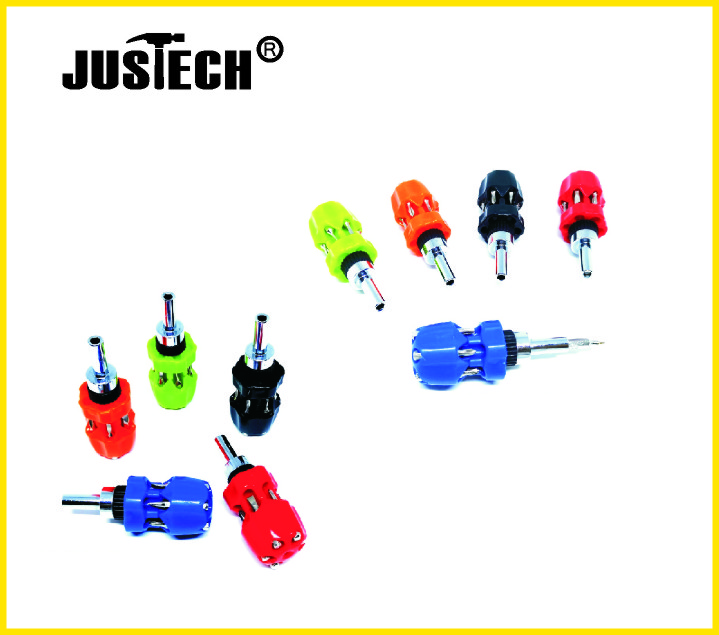In the past half century, China's tool industry has experienced a long period of glory: rapid development, best-selling products, good efficiency, and become the leader in the machinery industry. However, in the era of reform and opening up, the tool industry has not seen that our innovation performance in a relatively closed environment has great limitations; what's more, the contemporary technological revolution sweeping the world is bringing huge impact and pressure on the traditional manufacturing industry, including the tool industry. As a result, the structure of the whole industry is adjusted slowly, the overall service level is stagnant, and the gap between the demand of modern manufacturing industry for the tool industry is increasingly serious, resulting in the tool industry finally into today's dilemma.
In the era of planned economy, all walks of life tend to expand in quantity, but the tool industry is more prominent. By the end of the 1980s, a basic team of more than 100 key backbone enterprises and designated enterprises in the tool industry had formed the ability to produce 300 million high-speed steel cutting tools and more than 10 million measuring tools annually, ranking first in the world. At the same time, the annual production of high-speed steel cutting tools in Japan, the nearest tool manufacturing country, has only reached a record of 120 million pieces. Since then, due to the upgrading of manufacturing industry, the demand for standard cutting tools has decreased, and the production has gradually dropped to the level of 90 million pieces. China's manufacturing industry is not as large as Japan's, but its tool production is three times as large as Japan's, which has obviously reached a dangerous area of over expansion. In the past five years, the price of tools has been lowered again and again. Some enterprises even cut their sales by 40% - 50%, and the national sales volume only reached about 200 million pieces, which shows that the main culprit of excessive production. What's more, in the middle and late 1980s, due to the optimistic estimation of the market prospect, China's key tool enterprises not only expanded themselves, but also cultivated a large number of joint ventures to increase production capacity. Later, most of these joint ventures developed independently from their parent factories. In addition, some state-owned enterprises' employees set up factories by themselves, which constituted the first batch of tool private and township enterprises in China. These enterprises are relatively flexible in mechanism, and there are no historical burdens of state-owned enterprises. They might have become a new force in the reform and development of the tool industry. However, unfortunately, due to various restrictions on personnel, technology, equipment, management level and concept, most of these enterprises still follow an old way of quantitative expansion, which is becoming increasingly fierce. In just 10 years, the total number has increased to 1 billion pieces, and the varieties are concentrated in low-grade products such as twist drills, construction drills, woodworking tools, calipers and so on. Although the volume is large, the sales volume only accounts for about 30% of the GDP. Although these products have not entered the tool sales system of formal manufacturing industry at home and abroad due to the reasons of brand and quality, they have caused great impact on the tool export market of our country.
The second major mistake in the development strategy of the tool industry is the slow response to the wave of scientific and technological revolution and the great transformation and improvement of the international manufacturing industry. We didn't seize the opportunity to upgrade the structure level of China's tool products and services. Today, 20 years after the reform and opening up, the overall level of China's tool industry and the gap between foreign countries have not been narrowed but increased, which is a grim fact we have to face. We know that in the 1960s-1970s, the western developed countries have successively completed the "post industrial development stage". Since the 1980s, they have gradually stepped into the era of knowledge economy or new economy represented by the development of high-tech industries such as information, biology, new energy and new materials. A wave of high-tech transformation of traditional industries has emerged. Information technology, automatic technology, modern control and management technology are rapidly and widely used, so that the level of mechanical products and services to a new level. In this great revolution, the mechanical industry put forward unprecedented high standard requirements for the tool products, one of its main processing means. To sum up, it is high precision, high efficiency, high reliability and specialization, that is, the so-called "three high and one special". This kind of requirement, and tool industry traditional standardization, generalization, seriation production of the same product development model has produced great contradiction and conflict. The new four roll rolling process of twist drill was developed and popularized in the early 1960s. By the early 1980s, it was eliminated in all developed countries. In order to catch up with the development requirements of modern machining, foreign tool industry has made up its mind to aim at the new goal of "three high schools and one special college", change the old development mode completely and move to a new height. This all-round development and improvement requires a lot of capital investment and intelligence investment. At this time, however, we have lost the best development opportunities, and some enterprises with weak strength gradually fall short of their ability and withdraw from the stage. From these developments and changes, it is not difficult for us to understand that the gap between the stagnant Chinese tool industry and the rapidly developing foreign tool industry is an inevitable result.
In recent years, industry insiders often complain about weak market and poor sales. In fact, the market demand structure is being adjusted, the production structure is not being adjusted, and there is structural weakness. This is evidenced by figures: only from 1998 to 2000, the import of cutting tools increased from more than 40 million US dollars to more than 80 million US dollars every year. It can be seen that in the field of high-tech products, the market demand is still very strong. Reflection in the dilemma: there is no way out for retrogression. We must learn a new way of survival and development in the market competition.
Enter market economy, the enterprise is to give oneself a correct position above all: where is the advantage of the enterprise? For whom? How to serve? Correct positioning is the premise of enterprise development, the purpose is to develop strengths and avoid weaknesses, and to surpass competitors in the competition. In this regard, we must learn from the lessons of the planned economy era, and strive to be big and all inclusive, small and all inclusive, do everything and have no advantages, which is doomed to fail in the market competition.
Starting from the current situation of China's tool industry, it can be generally said that in terms of traditional standardized tools, the performance price ratio of China's products is still quite competitive in the domestic and international markets. This advantage should be maintained and carried forward, which is also the capital of our development, but we should not make the mistake of blindly increasing the quantity and starting at random. In terms of modern tools and technical services of "three high schools and one special college", there is a big gap between us and international strong players. However, in the international tool industry, there are only a few large and strong multinational enterprises, and thousands of small and medium-sized enterprises still survive and develop. What they rely on is to develop their expertise and take a small but specialized, small and strong road. China's tool industry in the transition to modernization, but also to play the characteristics of small and specialized steps. In particular, the current large and medium-sized tool enterprises should not overestimate their own strength. In the process of scientific and technological innovation and improving the competitiveness of enterprises, they should also pay attention to the key points, concentrate their efforts on fighting the war of annihilation, and never make the mistake of expanding the market and blind development again. This kind of practical and realistic positioning of the enterprise will give full play to the overall advantages of the whole industry and accelerate the pace of modernization.






